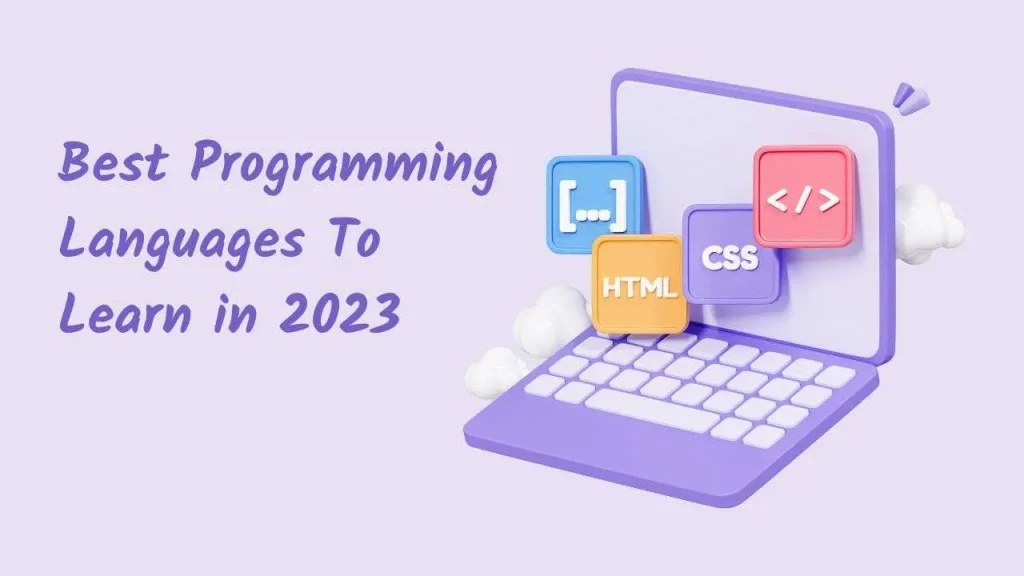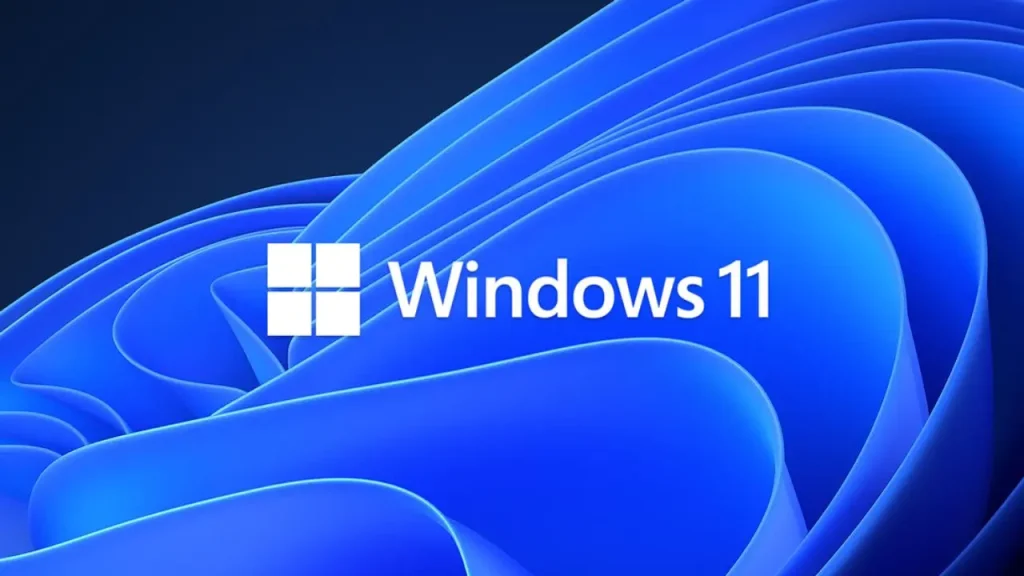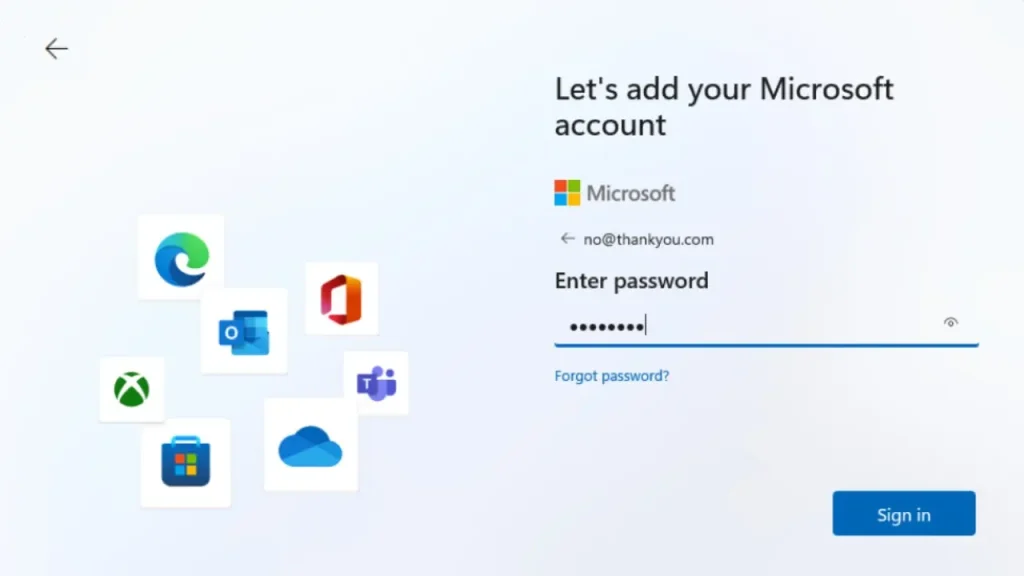Programming languages are continually changing, and new ones are developing every year in the quick-moving world of technology. As 2025 draws closer, it’s crucial to keep current with the newest programming languages to maintain your competitiveness in the job market and advance your coding abilities.
It might be daunting to decide which programming languages to concentrate on with so many alternatives available. Based on their use, usefulness, and promise for the future, we’ll cover the top programming languages to learn in 2025 in this blog article. Whether you’re a novice or a seasoned programmer. This guide will give you insightful information on the programming languages that will be in high demand in the upcoming year.
What is a Programming Language?
A programming language is a formal language used to write computer programs, applications and software. It consists of a set of rules, symbols and instructions used to create algorithms and express calculations in a form that a computer can perform. Programming languages are designed to be read and understood by humans. But also precise enough for a computer to understand and execute. They typically consist of keywords, operators, and syntax rules that allow programmers to define the structure and behavior of a program. Programming languages can be classified into different categories such as low-level languages (e.g. assembly language), high-level languages (eg Python, Java or C) and scripting languages (eg JavaScript or PHP). Each language has its own strengths and weaknesses and is better suited for certain types of applications or tasks.
Types of Programming Languages

There are many types of programming languages, each with its own syntax and purpose. Here are some of the more common types:
- Imperative/procedural languages: These languages focus on defining a sequence of steps to solve a problem. For example, C, C and FORTRAN.
- Object-Oriented Languages: These languages are based on the concept of objects containing data and methods for working with that data. For example Java, C and Python.
- Functional languages: These languages treat calculations like evaluations of mathematical functions and avoid mutable states and mutable data. Examples include Haskell, Lisp and F#.
- Scripting languages: These languages are designed to write scripts that automate tasks and can be directly interpreted by the operating system or interpreter. Examples include JavaScript, Python and Ruby.
- Markup languages: These languages are used to define the structure and presentation of documents or data. Examples include HTML, XML, and JSON.
- Query Languages: These languages are used to access and manipulate databases. For example SQL and SPARQL.
- Domain-Specific Languages (DSLs): These are languages designed for a specific purpose, such as configuration files or scientific computing. For example, Latex and R. These are just a few examples, and there are many other programming languages out there, each with their own unique features and strengths.
Best Programming Languages to Learn in 2025?

These are just some of the most popular and in-demand programming languages in 2025. However, it’s important to choose a language that aligns with your interests , as well as the needs of industry you want to work in. We have also write a blog post on How To Learn Programming you can read that too.
Here below there are some other famous programming languages you should know:
01- Javascript
- Popular programming language JavaScript is used for both front-end and back-end development. It can be executed by a web browser without the requirement for compilation and is mostly used to generate dynamic and interactive web sites. For the creation of recent web apps, JavaScript is frequently used with HTML and CSS.
- JavaScript supports a variety of design patterns. Including functional and object-oriented programming, and it has a syntax that is similar to C and Java. Besides this, it offers a large library of in-built functions and methods that make it simple to carry out routine activities. Like managing events, modifying the DOM, and executing AJAX queries.
02- Python
- Python is a popular high-level, interpreted programming language. Used for a broad range of tasks, such as web development, data analysis, machine learning, scientific computing, and more. Python is a well-liked programming language among both novice and seasoned programmers due to its simple syntax.
- Procedural, functional, and object-oriented programming paradigms are all supported by Python. Which also includes a sizable standard library that offers built-in modules and methods for carrying out a variety of tasks.
- Python’s emphasis on readability of code, which makes it simpler for developers to write and maintain code, is one of its fundamental advantages. While encouraging uniform formatting, Python’s indentation-based syntax enhances the readability and maintainability of code.
03- Java
- Java is a well-known high-level programming language that is frequently used for creating a range of programs, including desktop, online, and corporate software as well as mobile apps. Sun Micro systems, which is now owned by Oracle, created and published Java in 1995.
- Java is an object-oriented language. Which means it places a strong emphasis on building objects that include both the code needed to handle data and the data itself. Moreover, it includes functions that enable the development of scale able and effective programs. Such as platform independence, multi-threading, and autonomous memory management (garbage collection).
- Java is frequently used to create corporate software, and well-liked frameworks like Spring and Hibernate offer resources for creating scale able and reliable systems. It is also widely utilized in the creation of Android apps, with the help of the Android SDK. a set of tools and libraries for building native Android apps.
04- Kotlin
- Modern programming language Kotlin was created by JetBrains, the company behind the well-known IntelliJ IDEA IDE. It is a popular option for creating mobile, web, and server-side apps since it is designed to be brief, expressive, and safe.
- Kotlin is a statically-typed language that is completely compatible with Java, allowing it to be utilised alongside Java codebases that already exist. Because Kotlin’s syntax is intended to resemble Java’s, developers can learn and use it quickly.
- Kotlin’s emphasis on minimising the amount of boilerplate code that developers must create is one of its main advantages. Features like null safety, extension functions, and data classes help achieve this by enabling programmers to create programmes that is more concise and expressive.
05- Scala
- Scala is a 2004 object-oriented and functional programming language. It is intended to be succinct as well as expressive, and it runs on the Java Virtual Machine (JVM), allowing it to take advantage of the current Java environment.
- Scala’s support for functional programming techniques is one of its primary advantages. Higher-order functions, pattern matching, and immutable data structures are among the characteristics that make it simpler to develop correct, maintainable, and scalable code. Scala also supports object-oriented programming, such as classes, traits, and inheritance, making it a flexible language with many uses.
- Scala is also meant to be compatible with Java, allowing developers to utilise Java libraries and tools within Scala applications. This makes it easy to leverage the extensive Java ecosystem, including popular frameworks like Spring and Hibernate.
06- PHP
- PHP is a well-liked server-side programming language that is frequently employed in the creation of websites. Rasmus Lerdorf created it in its first form in 1994, and the PHP community has continued to work on and maintain it ever since.
- Because PHP is a dynamic, flexibly typed language, programmers are not required to explicitly specify data types. This increases developer productivity by making it simple to write and read code. Moreover, PHP is very versatile and has a sizable and vibrant developer community that contributes to several open source initiatives.
- Support for web development is one of PHP’s primary advantages. It can be simply integrated with databases and other online services and includes built-in capability for processing HTTP requests and answers. PHP is also highly compatible with different web servers and platforms, including Apache and Nginx.
07- C#
- Microsoft created the object-oriented programming language C#, sometimes known as “C sharp,” as a component of the.NET framework. Since its first release in 2000, it has grown to be one of the most widely used programming languages for creating Windows desktop programs, video games, and business software.
- The statically typed programming language C# was created to be straightforward, secure, and effective. Because of its shared syntax with other C-based languages like Java and C++. It is simple for developers to learn and use. Async/await, LINQ, and delegates are just a few of the contemporary features that C# offers, making it simpler to build code that is both expressive and effective.
- The performance of C# is one of its main advantages. It is translated into native machine code.
08- Swift
- Swift is a powerful, high-level programming language created by Apple to build apps for iOS, Mac OS, WatchOS, and TvOS. Since its first release in 201
- , it has become the language of choice for building iOS apps. Swift is designed to be fast, secure and easy to use. Since this is a statically typed language, the data types of variables are checked at compile time. Swift also includes advanced features that make it easy to develop expressive and efficient code, such as optimizations, closures, and generics. Swift’s performance is one of its main strengths. The language is designed to build high-performance applications quickly and efficiently. In addition, Swift has sophisticated memory management techniques that help prevent this
09- R
- R is a popular software environment and programming language for statistical computation and graphics. Since its 1995 debut, it has grown to be one of the most widely used languages for data analysis and visualisation.
- R is an interpreted language, hence there is no need for compilation because code is performed line by line. Data types are decided upon at runtime since the language is dynamically typed. This makes working with and doing statistical analysis on massive datasets simple.
- R’s extensive set of integrated statistical and graphical capabilities is one of its main advantages. R is highly suited for data analysis and machine learning because it offers capabilities for data manipulation, modelling, and visualisation. R also offers assistance for matrix operations, which are used extensively in data analysis and modelling.
10- C and C++
- Both the powerful programming languages C and C++ are frequently used to create a variety of applications, from system software to high-performance software.
- Early in the 1970s, the procedural programming language C was created. Writing system software like operating systems, device drivers, and compilers is a breeze thanks to this low-level language’s direct access to system resources. In embedded devices, where code size and efficiency are crucial, C is also often used.
- As an extension of C, C++ is an object-oriented programming language that was created in the 1980s. It enhances C with features like classes, objects, inheritance, and polymorphism that make creating and maintaining complicated, large-scale programmes simpler. There are many applications for C++ like game development, high-performance computing, and scientific computing.
11- Ruby
- It was made with simplicity in mind to be simple to learn and use, Ruby is a dynamic, object-oriented programming language. Since its 1995 debut, it has gained popularity as a language for general-purpose programming, automation, and web development.
- The expressiveness and ease of use of Ruby are well recognized. Beginners may quickly pick it up because to its simple, easy-to-read syntax, and its built-in functions and methods make it simple to develop effective, short code.
- The language Ruby is also quite flexible. Web development, data analysis, system management, and other uses are just a few of the many applications it may be put to use for. Ruby on Rails, one of the most widely used web development frameworks in recent years, is just one example of a web development framework that frequently uses recent years.
12- Matlab
- High-level programming languages like MATLAB are frequently used for scientific visualization and numerical computing. It was created in the 1980s, and engineers, scientists, and researchers now regard it as one of the most widely used programming languages.
- Linear algebra, signal processing, optimization, and other numerical computation tools are all available in MATLAB. Additionally, it offers effective visualization tools for making 2D and 3D plots as well as GUI (graphic user interface) building tools for interactive applications.
- The simplicity of use of MATLAB is one of its main advantages. The syntax in MATLAB is straightforward and simple to learn, making it simple to write and debug code. It is also well suited because it offers an interactive environment for exploring data and testing algorithms for scientific research and prototyping.
13- TypeScript
- A superset of JavaScript called TypeScript gives the language additional features like optional static typing. It was created by Microsoft and initially made available in 2012.
- Over JavaScript, TypeScript offers a number of advantages. Such as better error checking and code navigation, enhanced productivity for large-scale applications, and improved code maintainability and scalability. With support for features like interfaces, classes, and modules, the language is also intended to assist developers in writing more durable and dependable code.
- The fact that TypeScript can detect errors at compile time rather than run time is one of its main advantages. This makes it simpler for developers to find and fix bugs earlier in the development process and reduces the number of errors that occur in production. TypeScript offers additional strong support for tooling and IDEs, which can help developers write better code faster.
14- Go
- Google created the current programming language Go, sometimes referred to as Golang. It is well-liked for creating scalable network and online applications since it is intended to be straightforward, effective, and simple to use.
- With features like static typing, memory safety, and rubbish collection, Go offers a syntax that is comparable to C. Goroutines, a lightweight thread type that enables developers to create concurrent code quickly and effectively, are one of its distinctive characteristics.
- The extensive Go standard library comes with built-in assistance for network programming, web development, and other typical activities. Also, the ecosystem of third-party libraries and frameworks for the language is expanding, making it simple for programmers to create sophisticated applications.
15- SQL
- A standard language for maintaining and modifying relational databases is SQL (Structured Query Language). From its initial development in the 1970s, it has emerged as the most used language for interacting with databases.
- For searching and manipulating data in relational databases, SQL offers a potent collection of capabilities. It enables the creation, modification, and deletion of tables as well as the insertion, updating, and retrieval of data into and out of those tables. Moreover, SQL has strong capabilities for data filtering, sorting. And aggregation, making it simple to work with sizable and intricate datasets.
- The adaptability and flexibility of SQL are two of its main advantages. SQL may be used with a broad variety of various database management systems, including MySQL, PostgreSQL, and Oracle because it is a standard language. This means that developers can write SQL code that works across different platforms and technologies.
16- Perl
- In 1987, Larry Wall originally published Perl, a general-purpose programming language. It was created to be a versatile, simple-to-learn language that could be used for many different purposes. Such as text processing, system management, and web development.
- Perl’s strong regular expression support, which is one of its primary advantages. Makes it a good choice for jobs involving text processing and parsing. For doing typical operations like interacting with files, networking, and other common activities. Perl also has a variety of built-in functions and modules.
- Due to Perl’s nature as an interpreted language, runtime code execution takes place as opposed to machine code compilation. Code development and debugging are now simpler, albeit performance may suffer in comparison to compiled languages as a result like C or Java.
17- HTML
- Creating web pages and other documents that are accessible through a web browser requires HTML (Hypertext Markup Language), which is the industry standard markup language. The World Wide Web’s foundation was originally created using it in the 1990s.
- In order to specify the layout and content of a web page, HTML offers a number of tags and attributes. With the help of such tags and variables, web designers makes headers, paragraphs, lists, tables, pictures, links, and other elements that are frequently seen on websites. Forms, which enable data entry and user interaction with online applications, are also supported by HTML.
- The two key benefits of HTML are its simplicity and accessibility. It is possible to learn a markup language fast and simply, and it is understandable to people with a variety of technical backgrounds. It is hence a preferred option for creating basic web pages and prototypes.
18- CSS
- CSS (Cascading Style Sheets) is a style sheet language used for describing the visual appearance and layout of web pages written in HTML or other markup languages. It was first developed in the late 1990s and has since become an essential tool for web development.
- CSS provides a powerful set of tools for defining the look and feel of web pages. It allows developers to control the presentation of text, images, and other elements on a web page, including their size, color, position, and layout. CSS also provides support for responsive design, which allows web pages to adapt to different screen sizes and devices.
- One of the key strengths of CSS is its separation of content and presentation. By separating the content of a web page from its visual appearance, CSS makes it easier to maintain and update web pages over time. It also allows developers to create a consistent look and feel across a website, which can enhance the user experience.
19- NoSQL
- A class of databases known as NoSQL (Not Only SQL) employ non-relational data structures for data storage and management. NoSQL databases utilize a number of data models. Including document-based, graph-based, key-value, and column-family models, in contrast to conventional relational databases, which employ tables and rows to organize data.
- The capacity of NoSQL databases to expand horizontally, or handle massive volumes of data across several nodes or servers, is one of its main advantages. They are therefore suitable for usage in large data and distributed systems.
- NoSQL databases also provide a high level of flexibility and schema-less architecture, enabling developers to interact more naturally and intuitively with unstructured or semi-structured data. This can make it easier to work with complex or rapidly changing data sets.
20- Rust
- The initial version of Mozilla’s Rust systems programming language appeared in 2010. It was created to be a language for creating low-level systems and applications that is safe, concurrent, and quick.
- Focusing on memory safety is one of Rust’s major characteristics. Several of Rust’s features work to avoid common programming mistakes like buffer overflows and null pointer dereferences. Rust is a suitable option because of this for developing low-level systems and applications where memory safety is important.
- Rust also has robust concurrency and parallelism support, making it an excellent choice for developing high-performance systems and applications that must make use of contemporary multi-core machines. The ownership and borrowing scheme in Rust makes guarantee that concurrency issues. Such as data races, are discovered at compile time, rather than at runtime.
How to Get Started?

Beginning programming might first seem intimidating, but there are numerous tools available to assist you in learning and getting started. Following are some general guidelines:
- Choose a programming language: There are several programming languages available, and each has advantages and disadvantages. While choosing a language, take into account your objectives and passions.
- Create a development environment: Depending on the language you select, you might need to install a text editor, an IDE (Integrated Development Environment), and any necessary compilers or libraries.
- The fundamentals: Programming basics like variables, data types, control structures, and functions are a good place to start. You may learn from a variety of online tutorials, classes, and books.
- Coding practice: is a must since programming is a talent. Work your way up to more complicated projects starting with simpler programs.
- Create projects: Start creating your own projects as you get more coding familiarity. You may use your abilities and get experience by doing this.
- Join a community: Join discussion boards or online groups for the technology or programming language you are interested in. You’ll receive encouragement from others, gain knowledge from them, and maintain your motivation as a result.
Keep in mind that learning to code is a process, and mastery requires time and effort. Be patient, persevere, and never stop learning!
Conclusion
Today’s world requires the ability to program, and there are a variety of programming languages from which to pick based on your interests and objectives. There is a language that can fulfill your demands whether you want to create games, online apps, or low-level systems.
Setting up a development environment, understanding the fundamentals, and practicing coding are necessary for getting started with programming. Joining online forums and groups is essential if you want to network with other developers and get knowledge from their experiences.
Keep in mind that learning programming is a talent. That requires time and practice, but the benefits are well worth it. You can master a programming language and create incredible programs that can change the world if you put in the effort and commitment.






















